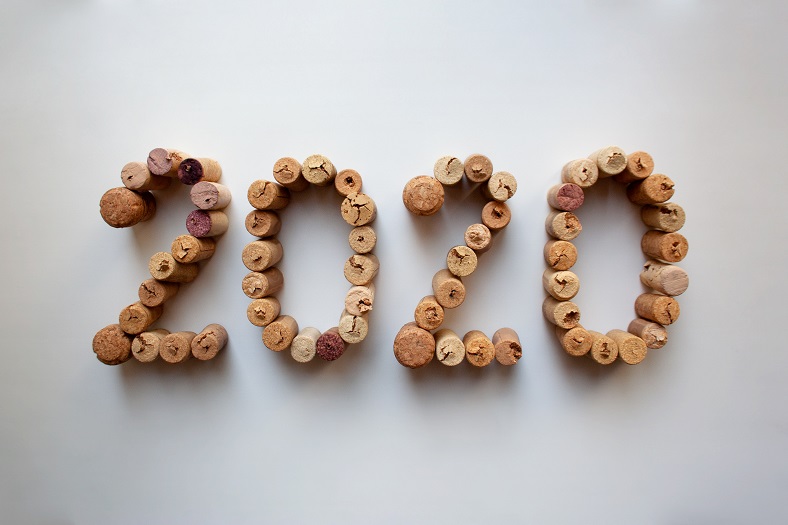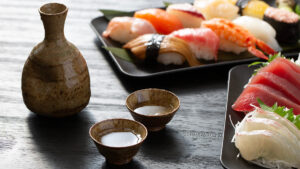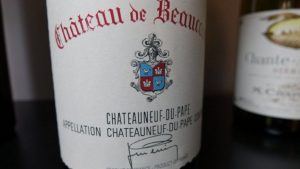
This year, pick up the pace in your discovery of new wines, broaden your horizons and step out of your comfort zone by trying new things! We won’t suggest that you try 2020 wines, but here are some of our biggest favourites and must-haves to get you inspired!
-
A red from la Côte de Nuits
We’re all dreaming of opening a bottle produced by one of the domains from the legendary trio of Romanée-Conti, Georges Roumier and Armand Rousseau. 2020 might well be the time to make this dream come true!
Aside from these absolute icons, let’s take a look at some of the region’s slightly more attainable gems. If you’ve never tasted a fine Gevrey-Chambertin or a Chambolle-Musigny, it’s high time to remedy this by discovering all the delicacy and depth expressed by the Pinot Noir variety. If you’re unsure of where to start, look to domains like Lucien Boillot, Rossignol-Trapet or Geantet-Pansiot, Trapet or Méo-Camuzet (Gevrey-Chambertin), Arlaud or Domaine de Montille (Chambolle-Musigny), Léchéneaut, Arlot and Faiveley (Nuits-Saint-Georges), Chantal Lescure or Domaine de Courcel (Pommard).
And if you want to try one of the Côte de Nuits’ finest wines, for an unbeatable value, look to Marsannay in the north of the region. If you choose a winemaker like Sylvain Pataille, Bruno Clair or Jean Fournier, you can’t go wrong! Similarly, the Hautes-Côtes-de-Nuits appellation offers a good number of accessible wines such as Laurent Roumier.
2. A fine red from la Côte de Beaune
On this side of Burgundy, it’s easier to fine wines at affordable prices, even when we consider those from Corton, the region’s only grand cru (Maillard et Fils, Rapet, Bichot, Domaine des Croix). The wines of Savigny-les-Beaune (Chandon de Briailles, Jadot, Mongeard-Mugneret), Ladoix (Prieuré-Roch), Aloxe-Corton (Follin-Arvelet) and Pernand-Vergelasses (Ramonet, Chandon de Briailles) share the same powerful and sophisticated character as well as a good ageing potential. The Beaune appellation offers some of the region’s lowest prices, in ‘village’ varieties and even premier cru (Domaine des Croix, Fanny Sabre). To discover a lovely Volnay, look to Maison Louis Jadot. As for Pommard, this is a good choice for anyone who likes slightly more powerful Pinot. Let yourself be tempted by Lucien Boillot or La Pousse d’Or.
3. A fine white from Burgundy
If you don’t try one of these fine, white wines, you’ll be missing out on an important part of the excellence that Burgundy has to offer. Chardonnay is the principal variety here, often in a style that is rich, ample, powerful and generous, especially the grands crus from the Côte de Beaune. You’ll love it or hate it, but you certainly won’t be left indifferent! If you’re after the emblematic domains, try Coche-Dury, Arnaud Ente or Leflaive. For more affordable prices, Comtes Lafon, Philippe Pacalet or François Mikulski might be the domains for you.
4. A mature wine from Bordeaux
Bordeaux’s fine, mature wines are perennially magical and inimitable. They’re wonderful when enjoyed at the table with dishes like red meat, terrine and mushroom. And if you want to cross this threshold with one of the best crus classés, already evolved? The must-haves are found among the premier crus (Petrus, Châteaux Haut-Brion, Margaux, Latour, Lafite-Rothschild, Mouton-Rothschild, Angélus, Ausone, Cheval Blanc and Pavie) in their 1989, 1990, even 1982 or 1961 vintages. Of course, other extremely well-reputed châteaux like Léoville Las Cases or Pavie-Macquin are also exceptional.
5. A ‘new wave’ Bordeaux
Because Bordeaux is not just about great classics made to be kept for an age – even if this remains the region’s strength and signature – we suggest that you try a cuvée from the domains that have emerged in recent years. These domains are producing wines in a different vein, either marked by a drinkable, fresh and flavourful character (see Haut-Carles, Château Siran) or are the products of original vinification processes (amphora, natural, maceration wines). We particularly recommend the following domains: La Closerie des Moussis, Château Le Puy, Château Pontet-Canet, and Clos du Jaugueyron.
6. A biodynamic Bordeaux
The Bordeaux region has been sufficiently reproached for its lateness in joining the organic and biodynamic bandwagon. Let’s highlight the efforts of estates that have made efforts in this direction. You still have quite a lot of choice, with châteaux like Pontet-Canet, Latour, Angélus, La Lagune, Climens, l’Evangile, Guiraud, as well as Clos Puy Arnaud, Haut-Bergey, Maison Blanche, Château Clarisse and La Closerie des Moussis.
7. A mature Côte-Rôtie
After exploring the must-haves of Bordeaux and Burgundy, a fine wine from the Rhône valley has to be next! Much like in Bordeaux, opening a wine from this region too early is somewhat of a sacrilege. So, make the most of the mature vintages available at iDealwine from the best domains of the Côte-Rôtie appellation, such as Jamet, Guigal, Gangloff, Ogier, or even Stephan and Jasmin.
8. A good natural wine
If you’ve not yet been tempted by natural wines, it’s high time to open one at least once this year! And it’s not the fact of the wine being natural that should lead us to try it – a good, natural wine is simply a good wine, faultless. At iDealwine, we offer only bottles that are sure to please in this category…so you can trust us! You have a choice between the true icons of this genre, such as Overnoy, Ganevat, Selosse and Thierry Allemand, or wines at much more attainable prices like Jo Landron, Domaine de l’Ecu, Jean Foillard, Henri Milan, Breton and Marcel Richaud.
9. A rising star
The world of wine is in constant evolution, and new talent is emerging all the time – this is one of the most exciting reasons to get into discovering the industry’s rising stars. To help you, iDealwine has put together a selection of these after much careful research – find them here. These wines have the advantage of being offered at lower prices (at least to begin with). But if we were to suggest just two or three, these would be the Pattes Loup, Aléofane and Mee Godard domains.
10. An Italian icon
Are Italian wines still a relatively unknown quantity to you? Along with France, Italy undoubtedly produces the most beautiful wines in the world. Depending on your tastes, you might for example choose the Masseto from Tenuta dell’Ornallaia (100% Merlot), a Sassicaia if you’re a fan of the ‘Super Tuscans’, maybe a wine from Domaine Angelo Gaja, or see Giuseppe Rinaldi’s selection for a fine wine from Piedmont.
11. A Spanish icon
The same goes for Spain: a wine enthusiast looking for new discoveries mustn’t miss out on this land of fine wines. The famous Vega Sicilia produces some of the world finest wines with its Unico and, believe us, if you have the chance to taste it, you’ll remember it for your whole life!
12. A wine from the New World
With a choice of wines from Australia, New Zealand, South Africa, America and Chile, it’s difficult to know what to go for, and there are so many that deserve to be tried! Since you have to start somewhere, here are our favourites: Penfolds (Australia), Cloudy Bay, Felton Road (New Zealand), Glenelly (South Africa), Hiyu Farm and Opus One (United States).
13. An orange wine
There are indeed orange wines! These are white wines that have been vinified following methods used in the production of red wine (including maceration), which gives them an orange tint, powerful aromas and sometimes a tannic feel. At iDealwine, we’ve selected the best orange wines for you.
14. A vin jaune
Vin jaune is an oxidized wine from the Jura that is made from Savagnin – you’re likely to know of this wine if you like to cook! This kind of wine is crafted by producers like Overnoy, Ganevat and Tissot.
15. An old naturally sweet wine
Drinking a wine that has been aged for half a century, or even more than a century, is a unique experience in itself, a way of connecting with the past and with your senses. However, it’s often a risk to taste just any old wine, except if you choose one of the finest…and this can come at quite a price! However, naturally sweet wines (VDN) are still surprisingly affordable. See our selection here.
16. A wine from a local, rare or forgotten grape variety
In terms of unusual grape varieties, regions like the Jura, Savoy and Corsica are bursting with choice. You should try a Poulsard, a Gringet or maybe a Bianco Gentile.
17. A wine matured in amphora
This kind of vinification, originally from Georgia, has been making a comeback in several countries for some years now. It has the advantage of allowing for very soft vinification through infusion, which confers a very supple and silky texture to the wine. Amphora doesn’t mark the wine in the same way that wooden barrels do.
18. A fine German Riesling
You might have already tried a Riesling from this part of the world, perhaps by Prum or Fritz Haag, both already delicious. But what about a truly fine Riesling? This year, we’re dreaming of savouring the wonderful bottles produced by Egon Muller…
19. A dessert wine in the legendary 2001 vintage
The 2001 vintage is recognised as one of the finest, notably in Bordeaux, where the wines present a masterful balance. Yquem is undoubtedly a must have. Fortunately, there are also many more crus classés that will make for some wonderful tasting experiences – Climens, Guiraud, Rieussec and Fargues are a few that come to mind.
20. An absolute icon, the wine of your dreams
Why not make this the year when you try one of the finest icons the vineyards of the world have to offer, a wine you’ve always dreamed of that will be divine to taste, leaving you with unforgettable memories. Are you looking for a bit of inspiration? Here are our top 5 icons:
Romanée-Conti from Domaine de la Romanée-Conti
Musigny from Leroy
Vosne-Romanée Premier Cru Cros Parentoux from Henri Jayer
Hermitage cuvée Cathelin by Jean-Louis Chave
A Savagnin ouillé by Overnoy
We hope that this list can be useful in guiding your wine choices for this year – enjoy all your new discoveries!



